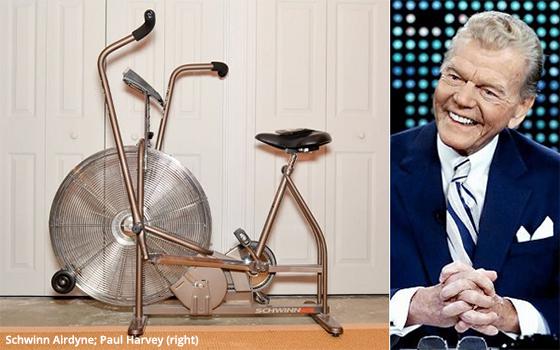
If the news portion of our radio and TV
newscasts is all bad news, then where might we find some good news?
More than 30 years ago, Paul Harvey had an answer to that. To him, the “good news” in the self-styled
newscasts he wrote and broadcast every day on the ABC Radio Network -- “Paul Harvey News” -- was not to be found in the newscast itself.
Instead, the
good news about America was found in the commercials that ran during the show. It was his belief that advertising was the good news everybody is always saying they want, but never realize it is right
there in front of their own eyes.
Memories of Paul Harvey and his take on the age-old complaint that the news is always bad come to mind because many people
today are reviving the bad-news complaint about our own present-day news media.
advertisement
advertisement
Friends, family members, business associates and casual acquaintances are all
saying the same thing -- that they have vowed recently to cut down or possibly even eliminate the news from their daily media diet.
It is all bad, they say.
Or more to the point, it is all bad news about the COVID-19 pandemic -- the chaos, the consequences, the general confusion. When will it end? When will things open up? What will life be
like?
The creeping consensus seems to be that no one has consistent, authoritative answers to these questions -- not our government officials and certainly
not our TV reporters, our news channel talk-show hosts, or their clueless commentators.
Trusting any of the cross-talking voices in the COVID cacophony is
nearly impossible, not least because news today is so biased and partisan. Everyone has their own agenda. No one meets in the middle, where one might assume the truth resides.
Instead, MSNBC and CNN on one side, and Fox News Channel on the other side offer you versions of the world we are now living in that are so starkly different that they
might as well be on different planets.
It is easy to become frustrated by the abundance of noise and the scarcity of real, useful information.
This situation might concern younger people more than older ones, however. With aging comes perspective, and it is no less true when observing the news business.
Older people know better than younger ones that frustration over the daily avalanche of bad news is not a new phenomenon.
I
heard Paul Harvey give his good-news/bad-news take on the news in a keynote speech he delivered more than 30 years ago at one of the radio and TV industry trade shows I used to cover in the
1980s.
I apparently found his point-of-view intriguing enough to actually remember it, and to think about it from time to time.
I even remember him specifically citing the commercials for the Schwinn Airdyne stationary exercise bike (pictured above) that aired during his newscasts as Exhibit A in
his advertising-as-good-news thesis.
Schwinn was a loyal, long-time sponsor of Harvey’s radio shows and he swore by them. He was a broadcaster of the
old school who voiced the commercials for Schwinn and other sponsors himself.
To him, the “good news” in the Airdyne commercials was this: That
we have the great fortune to live in an era and in a country in which just about any average American can have access to great products such as this sturdy, handsome stationary exercise bike, which
Harvey himself claimed to use every day.
He felt he owed his good health to this machine, and maybe he was right. He died at age 90 in 2009.
But the Schwinn Airdyne spots were just one example of the great, good news he felt was inherent in all of our radio and TV commercials. What an abundance of incredible
products, he said -- automobiles, healthcare products, food and beverages of every description, and the list goes on and on.
Our electronic media today are
full of bad news. Are commercials the antidote? Paul Harvey thought so. And that’s the rest of the story.